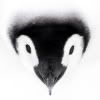
Another Indonesian Volcano Threatens to Erupt
Indonesia is on alert again for a possible volcanic eruption, this time from Mount Bromo, located on the eastern end of the Indonesian island of Java, according to news reports.
The eruption red alert comes just a couple weeks after Mount Merapi's relentless erupting killed more than 300 people. [Related: Mount Merapi's Devastation Seen from Space.]
"We raised the status of Bromo to the highest red alert level at 3:30 pm (0830 GMT) today. There's a chance of an eruption soon," government volcanologist Surono told AFP.
Bromo started rumbling to life on Nov. 8, the AFP reports, and plumes of smoke and ash were rising from the summit crater on Tuesday (Nov. 23).
But Bromo, unlike Merapi, lies in a less populated region, within the Bromo-Tengger-Semeru National Park. Merapi has displaced more than 200,000 people from nearby villages.
Bromo is a fairly active volcano; it last erupted was in 2004, killing two tourists.
Bromo is located in the center of the Sandsea Caldera, itself only a portion of the larger Tengger Caldera (a caldera is the circular depression in the center of a volcano's summit). The Sandsea caldera formed around 8,000 years ago, in what must have been a massive eruption. Subsequent volcanic activity formed the cluster of cinder cones in the caldera's center, including Bromo.
According to Erik Klemetti of Big Think's Eruptions blog, Bromo is a different type of volcano than Merapi, one that tends to have smaller eruptions that blech out ash and perhaps small lava flows, but doesn't produce the large pyroclastic flows — scorching rivers of gas and rock — that stratovolcanoes like Merapi do.
Indonesia itself is a very volcanically and seismically active region that lies along the infamous Pacific Ring of Fire. One of the largest volcanic explosions in history, that of Krakatoa in 1883, occurred on the tiny volcanic island of the same name between Java and Sumatra, killing some 40,000 people. The remnant of that spectacular eruption, called Anak Krakatau, has also been rumbling and producing smoke recently.
Source-------------------------------------------------------------------------------------------------------------------------------------------------------------------------------
NASA image Krakatau erupting - HERE
Throughout the summer and fall of this year, the volcano Anak Krakatau has erupted hundreds of times a day. But by Nov. 17, when NASA's Earth Observing-1 satellite took this image, activity at the volcano had started to slow at the remnant of one of the most powerful volcanic eruptions in history.
The thick brown plume of ash, steam and volcanic gas rising from Anak Krakatau in this true-color image is a common sight at the volcano. Responsible for one of the largest and most destructive eruptions in Indonesia's history, Krakatau (also sometimes spelled Krakatoa) still erupts frequently. Due to the many eruptions, NASA automatically monitors Krakatau and 99 other volcanoes with the Earth Observing-1 (EO-1) satellite.
Krakatau is considered one of history's most destructive volcanoes. The volcano is most famously known for its eruption in 1883, during which around 40,000 people were killed. The eruption had roughly the same force as 200 megatons of TNT, according to sciencebuzz.com. Ash from the explosion was thrown 50 miles (80 kilometers) into the air, and stayed in the air over Europe and Asia, tinting the sky red from November 1883 to February 1884.
In addition, the explosion spawned tsunamis that were 120 feet (37 meters) in height, and whose results were seen as far away as the West Coast of the United States.
The explosions were so violent that they were heard 2,200 miles (3,500 kilometers) away in Perth, Western Australia. The pressure wave from the final explosion was recorded on barographs around the world, which continued to register it up to 5 days after the explosion.
The eruption decimated the northern two thirds of the island the volcano was on. The current island, known as Anak Krakatau, means "Child of Krakatau" and the volcanic island formed in the caldera that remained after the 1883 explosion.
------------------------------------------------------------------------------------------------------------------------------------------------------------------------------
Indonesia volcano death toll rises to 322 |
| JAKARTA - 23rd November 2010 |
| By AFP |
|
"The Merapi death toll has reached 322 people. More than 130,000 people are still living in temporary shelters," disaster management official Agam Ferdatama said, updating the previous toll of 309 dead. "Rescuers found many bodies in the incinerated area of Cangkringan," he said. The government reduced the exclusion zone on Friday for the second time in a week because of the volcano's declining volatility, allowing more refugees to return to their homes. Ferdatama said they had updated the number of refugees from more than 200,000 people. Merapi killed around 1,300 people in 1930 but experts say November has seen its biggest convulsions since 1872. |
Source
-------------------------------------------------------------------------------------------------------------------------------------------------------------------
--
Got Penguins?
Penguin News Today
The Science of Penguins
The Gentoos are back! Come see them on live cam at:
Gentoo Penguins of Gars O'Higgins Station, Antarctica

__._,_.___
 Indonesia's Mount Merapi volcano has killed 322 people since it began erupting late last month, and over 130,000 people are still living in makeshift camps, an official said Tuesday.
Indonesia's Mount Merapi volcano has killed 322 people since it began erupting late last month, and over 130,000 people are still living in makeshift camps, an official said Tuesday.
No comments:
Post a Comment